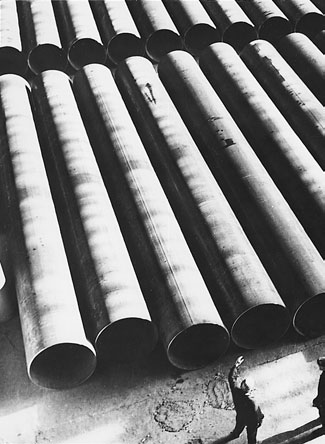Armageddon Averted: The Soviet Collapse, 1970-2000 (3 page)
Read Armageddon Averted: The Soviet Collapse, 1970-2000 Online
Authors: Stephen Kotkin
Tags: #Non-Fiction, #Politics, #History

7. Mikhail Gorbachev, addressing the newly established Congress of People’s Deputies, May 1989. The Congress shattered many taboos, not least of which was the fact that its proceedings were televised live.
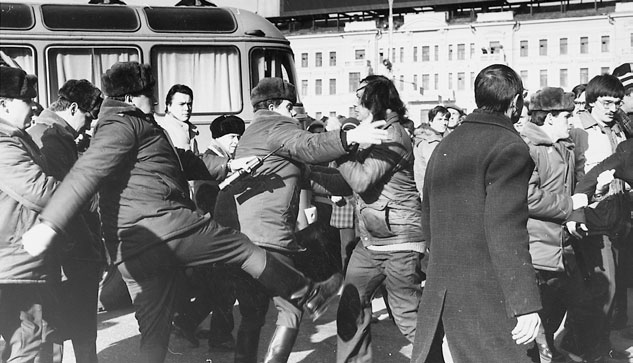
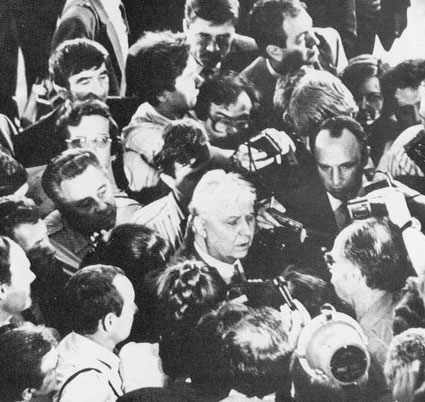
8a. Suppression of a demonstration by the self-styled ‘Democratic Union’, Pushkin Square, Moscow, June 1989. Responding to glasnost by raising Russia’s pre-Communist white, blue, and red flag and calling for restoration of the ‘bourgeois order’, the DU assembled fewer than a dozen protesters, who were hauled away in the mini-bus. Just over two years later, the tricolor would replace the hammer and sickle over the Kremlin.
8b. Yegor Ligachev, 1990. Ligachev commanded vast authority throughout the Soviet establishment, and eveyone, especially the press, expected him to wield that power and bring a halt to the reforms. But he never did.
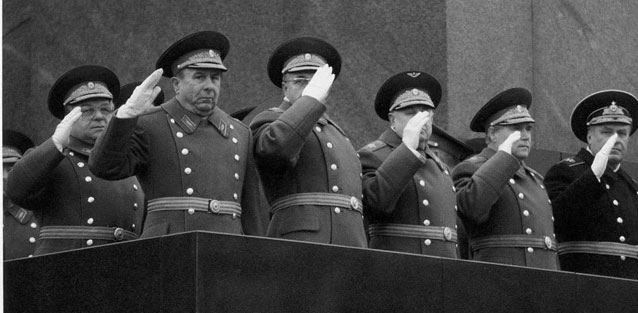
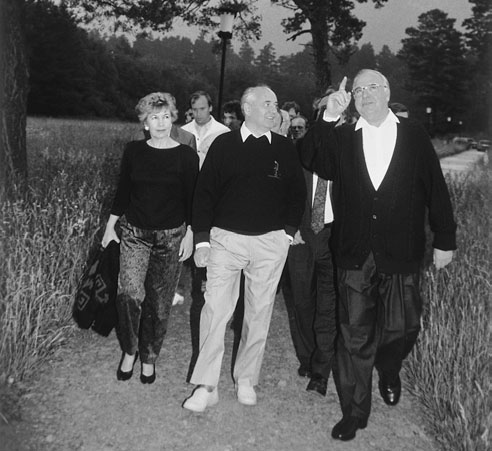
9a. The Soviet High Command, Red Square, 7 November 1989, just before the Berlin Wall was breached, and Eastern Europe was not prevented from breaking away. Only the commander of ground forces (second from left) would play an active role in the failed August 1991 putsch to ‘save’ the Union.
9b. Gorbachev with Chancellor Helmut Kohl, Stavropol, July 1990, when the Soviet leader voluntarily acceded to the unification of Germany with inclusion in NATO.
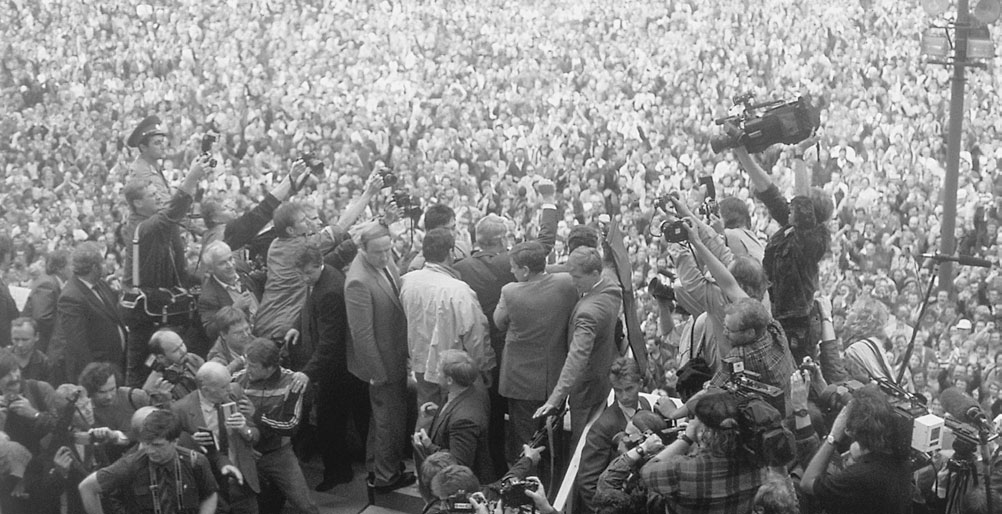
10. Boris Yeltsin, fist raised (centre). Having ridden to power atop mass popular sentiment, Yeltsin retreated into a secluded, depressed, ineffectual rule, surrounded by courtiers, including bodyguard Alexander Korzhakov (behind and to the left of Yeltsin, looking down on the media).
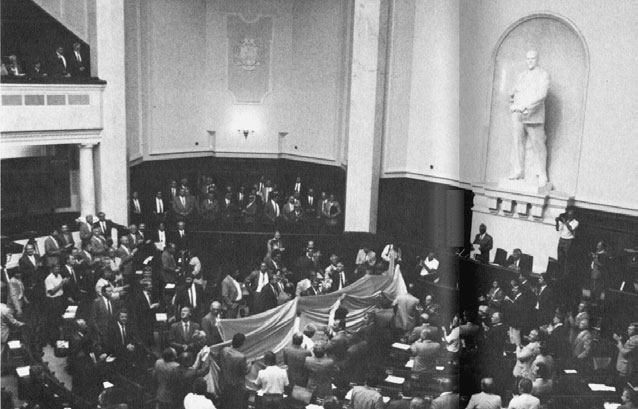
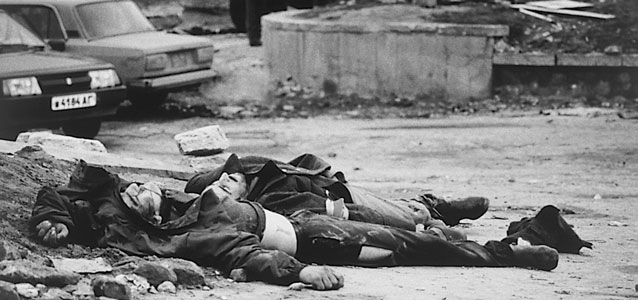
11a. The Ukrainian flag was unfurled in the republic’s Supreme Rada (parliament) on the day the deputies voted to declare independence, 24 August 1991. The majority of the Ukrainian elite came very late to the cause of independence. A statue of Lenin overlooks the proceedings.
11b. Armenian casualties of an Azerbaijani pogrom, which served as the rationale for Soviet military action in Baku, Azerbaijan, January 1990. The intervention took place after the pogroms had ended, and was designed to chasten nationalists and restore a pro-Moscow regime. By 1990–1, resolute use of force remained the only way of holding the Union together in order to try to transform it.

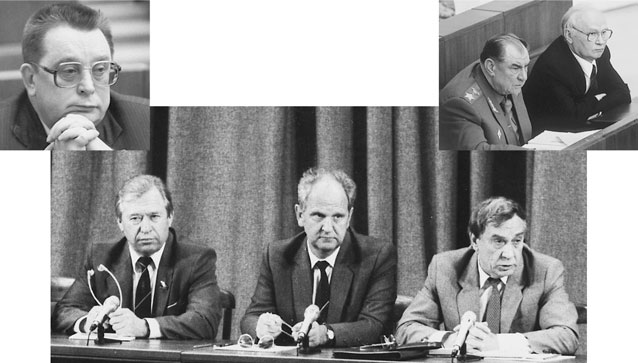
12a. Elite KGB troops, facing demonstrators and readying their truncheons, which they mordantly called ‘democratizers’.
12b. The August 1991 coup plotters were a gang of eight, but not everyone showed up for their own press conference led by the unsteady Gennady Yanaev (right); missing were (left inset) the hardline prime minister Valentin Pavlov, who drank himself into the hospital, and (right inset) Defense Minister Yazov along with KGB chief Kryuchkov.

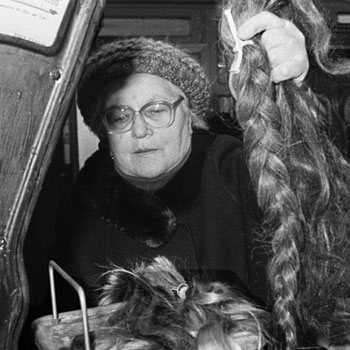
13a. Anatoly Chubais, chief of the State Property Committee responsible for privatization. To accompany his gesture (palms spread)—normally associated with the tall tales of fishermen who embellish the size of their catch—one of Chubais’ many enemies appended a caption, ‘everyone will receive a voucher this big’.
13b. Having saved her
girlhood locks, a woman sells them at a specialty shop in St Petersburg. Her monthly pension was reduced to $16
by hyperinflation; her hair, worth slightly more, would be exported to the West for
wig-making.
